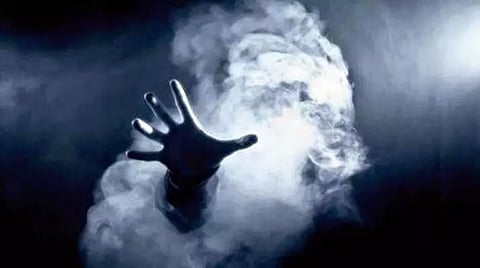
- Home
- Live Blog
- Breaking News
- Top Headlines
- Cities
- NE News
- Sentinel Media
- Sports
- Education
- Jobs

Folklore across the globe abounds about various kinds of ghosts and evil spirits, and Assamese folklore is no exception. While belief in spirits was – and probably still is – universal, Vedic literature abounds in references to bhoot, yaksha, rakshasa, pichasa, and various other elements. Eminent folklorist and scholar Praphulladatta Goswami had mentioned the 'Griha-sutra' speaking about demons that cause harm to cattle and children, as also the Atharva-Veda. Way back in 1905, pioneer scholar and researcher Benudhar Rajkhowa – a contemporary of Sahityarathi Lakshminath Bezbaroa – had written a book called 'Assamese Demonology' in which he had not only given a list and description of various ghosts, demons and spirits of Assam but had also divided them into several categories. His list included aquatic spirits like baank, dote, jakh, datial, jankakharia, jal-sai, jal-narayan and jal-konwar; sylvan spirits like chamon, burha-dangoriya, alakhani, pixach, daini, peret, bhoot, khetor, markuchia, prasuta, kandh, bira, parooa, khabish and thalgiri; celestial spirits like jam, bih-karam, kalika, deo, lakhimi, apeswari and bijuli; and subterranean spirits like gooloi. Rajkhowa had also given vivid descriptions of problems that the various spirits and ghosts can cause to victims. For instance, the 'peret' afflicts the victim with itches, boils and fever, while the 'chamon' turns the eyes of the victim yellow. The 'khetor' on the other hand takes away newborn children and calves of domestic animals and hides them nearby. The descriptions of the 'burha-dangoriya' and 'baank' however are the most fascinating. The 'burha-dangoriya' is tall, looks like a fully-bloomed rose, and wears a magnificent turban and a wrapper, apart from a spotless white dhoti. He is generally benevolent and protects people who propitiate him, but can cause serious problems if offended. The 'baank' on the other hand has long twisted arms and legs, does not have a head, and as such his eyes and mouth are located on his chest and stomach respectively, loves to eat fish and follows fishermen who go out fishing during the night. Going one step ahead from what Benudhar Rajkhowa had written in 1905, geologist-turned-linguist Pranavjyoti Deka, in his 'Jyoti Bilingual Thesauras' published exactly one hundred years later (in 2006) also provides an illustration of the 'baank' , said to be the most common spirit or ghost across Assam. Belief in evil spirits and ghosts is considered unscientific and paranormal. But, one however cannot deny or wipe them all together, especially because they are part of our folklore, whether in Assam and India or the West.